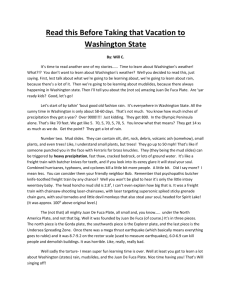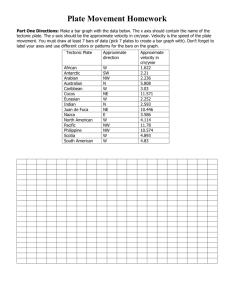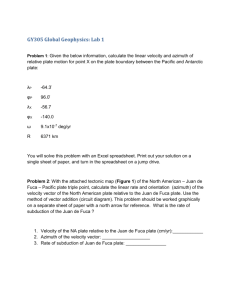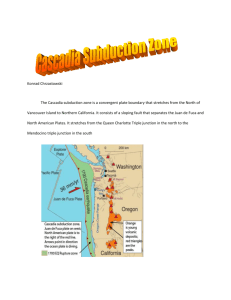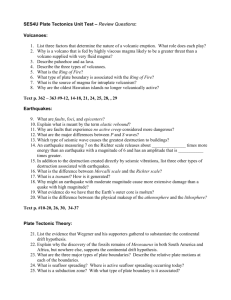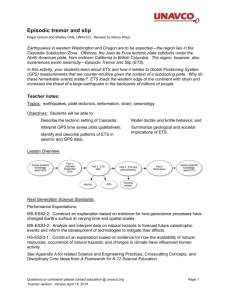Why Episodic Tremor and Slip matters
advertisement
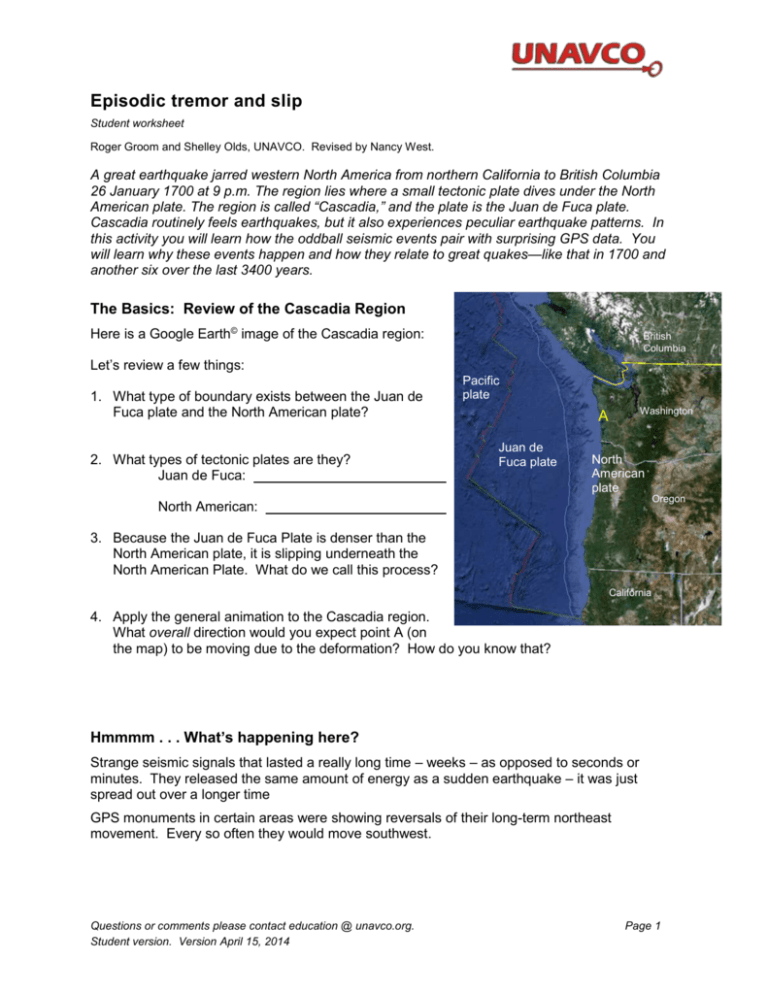
Episodic tremor and slip Student worksheet Roger Groom and Shelley Olds, UNAVCO. Revised by Nancy West. A great earthquake jarred western North America from northern California to British Columbia 26 January 1700 at 9 p.m. The region lies where a small tectonic plate dives under the North American plate. The region is called “Cascadia,” and the plate is the Juan de Fuca plate. Cascadia routinely feels earthquakes, but it also experiences peculiar earthquake patterns. In this activity you will learn how the oddball seismic events pair with surprising GPS data. You will learn why these events happen and how they relate to great quakes—like that in 1700 and another six over the last 3400 years. The Basics: Review of the Cascadia Region Here is a Google Earth© image of the Cascadia region: British Columbia Let’s review a few things: 1. What type of boundary exists between the Juan de Fuca plate and the North American plate? 2. What types of tectonic plates are they? Juan de Fuca: Pacific plate A Juan de Juan de plate Fuca Fuca plate Washington North A American plate A North American plate Oregon North American: 3. Because the Juan de Fuca Plate is denser than the North American plate, it is slipping underneath the North American Plate. What do we call this process? California 4. Apply the general animation to the Cascadia region. What overall direction would you expect point A (on the map) to be moving due to the deformation? How do you know that? Hmmmm . . . What’s happening here? Strange seismic signals that lasted a really long time – weeks – as opposed to seconds or minutes. They released the same amount of energy as a sudden earthquake – it was just spread out over a longer time GPS monuments in certain areas were showing reversals of their long-term northeast movement. Every so often they would move southwest. Questions or comments please contact education @ unavco.org. Student version. Version April 15, 2014 Page 1 Episodic tremor and slip A pattern emerges . . . 5. From looking at the data, describe the direction of movement of the western edge of the North American plate between 1996 and 1999. Remember this is a time series plot – look carefully at what is being measured on the Y-axis. 6. About how often is the reverse motion happening? 7. Approximately how many millimeters of reverse motion occurs during each slip event? Putting the pieces together 8. Now, what do you notice about the seismograms? Now what? Implications of what we’ve learned 9. What does the data show? Did PABH experience a reverse motion or slow slip event? 10. Explain how the data from PABH are different from observations at ALBH. Let’s try to model what’s happening with the Juan de Fuca Plate as it moves under the North American Plate. 11. Take the noodle out of the water. Gently bend the part of the lasagna that was in warm water. Describe what happens. 12. Now, using the same amount of pressure as you did in question 11, try to bend the part that was not in the water. What happens? 13. Keep applying pressure to the cool, dry lasagna. What eventually happens? 14. How do you think this models what’s happening with the subducting Juan de Fuca plate? Tie in the idea of the “locked” zone and the “slip” zone. Questions or comments please contact education @ unavco.org. Student version. Version April 15, 2014 Page 2 Episodic tremor and slip 15. After watching the animation, draw in what the time series plots look like for the three zones: Locked Slow slip No slip Why Episodic Tremor and Slip matters Station C 0 Time East Displacement (mm) East Displacement (mm) 16. Draw a sketch of what the time series plots looked like for stations located at C and D on the map. This is just one instance of a slow slip event. Don’t worry about where to start the line – you can start it either below the 0 line or right on it. Station D 0 Time The BIG picture: 17. Given a “slip-deficit” of 3 centimeters per year, how much would accumulate in 500 years? About how many feet is that? 18. Why would predicting when a great earthquake and tsunami would happen be so important? Questions or comments please contact education @ unavco.org. Student version. Version April 15, 2014 Page 3
